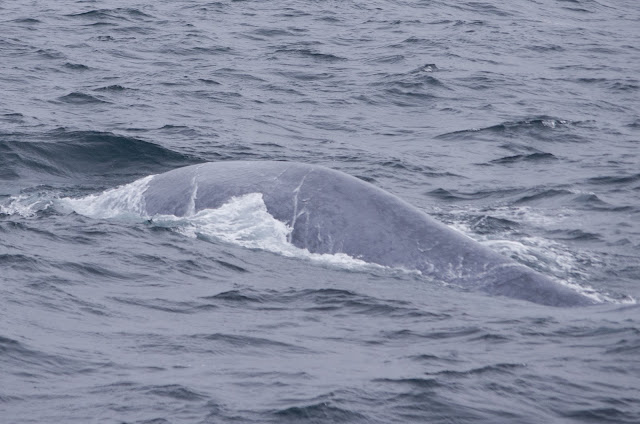Jökulsárlón is the largest glacier lagoon in Iceland. Situated in south eastern Iceland, at the head of the Breiðamerkurjökull glacier branching from the Vatnajökull, between Skaftafell National Park and Höfn, it evolved into a lagoon after the glacier started receding from the edge of the Atlantic Ocean. The lake has grown since then at varying rates because of melting of the Icelandic glaciers. The lagoon now stands 1.5 kilometres away from the ocean's edge and covers an area of about 18 km2. It is the second deepest lake in Iceland at over 200 metres deep. The size of the lagoon has increased fourfold since the 1970s. It is considered as one of the natural wonders of Iceland.
Saturday, 15 October 2011
Vatnajökull, Iceland
Vatnajökull is the largest glacier in Iceland. It is located in the south-east of the island, covering more than 8% of the country. With an area of 8,100 km², Vatnajökull is the largest ice cap in Europe by volume and the second largest in area.
Seljalandfoss, Iceland
Seljalandfoss is one of the most famous waterfalls of Iceland. This waterfall of the river Seljalandsá drops 60 metres over the cliffs of the former coastline. It is possible to walk behind the waterfall. It is very picturesque and therefore its photo can be found in many books and calendars.
Skálholt, Iceland
Skálholt - the cathedral is elegantly underplayed, plainly decked out and unusual only for its size. Inside, a mitre over the door identifies Skálholt as a bishopric; there's a nicely proportioned wooden ceiling, abstract stained glass windows and a tapestry like mosaic of christ behind the altar.
Friday, 14 October 2011
Skógafoss, Iceland
Skógafoss is a waterfall situated in the south of Iceland at the cliffs of the former coastline. After the coastline had receded seaward, the former sea cliffs remained, parallel to the coast over hundreds of kilometres, creating together with some mountains a clear border between the coastal lowlands and the Highlands of Iceland. The Skógafoss is one of the biggest waterfalls in the country with a width of 25 metres and a drop of 60 metres. Due to the amount of spray the waterfall consistently produces, a single or double rainbow is normally visible on sunny days.
Þingvellir, Iceland
Þingvellir is a place in Bláskógabyggð in southwestern Iceland, near the peninsula of Reykjanes and the Hengill volcanic area. Þingvellir is a site of historical, cultural, and geological importance and is one of the most popular tourist destinations in Iceland. It is the site of a rift valley that marks the crest of the Mid-Atlantic Ridge. It is also home to Þingvallavatn, the largest natural lake in Iceland.
Mýrdalsjökull, Iceland
Mýrdalsjökull is a glacier in the south of Iceland. It is situated to the north of Vík í Mýrdal and to the east of the smaller glacier Eyjafjallajökull. The icecap of the glacier covers an active volcano called Katla. The caldera of the volcano has a diameter of 10 km and the volcano erupts usually every 40–80 years. As the last eruption took place in 1918, scientists are monitoring the volcano very carefully as they believe an eruption of Katla is on the cards, particularly after the eruption of Eyjafjallajökull began in April 2010.
Hekla, Iceland
Hekla is a stratovolcano located in the south of Iceland with a height of 1,491 metres. Hekla is one of Iceland's most active volcanoes; over 20 eruptions have occurred in and around the volcano since 874. During the Middle Ages, Icelanders called the volcano the "Gateway to Hell."
Thursday, 13 October 2011
Whale Watching - Grindavik, Iceland
Blue Whales are the biggest animals on earth. So we headed out from Grindavik with cold crisp air and some wind. We first saw Harbour Porpoises, the smallest cetaceans around Iceland and they were fast swimming, then we headed further out in hope to find the Blue Whales which were seen the day before. Then we saw it, the blowwe were all waiting for and as we got closer we noticed some White-beaked Dolphins jumping and breaching around the whale. They looked to be annoying it but maybe they were feeding on the fish that were eating the krill the Blues were feeding on. We watched these guys for a while until the dolphins left and the whale rolled just 5 meters from our boat. Absolutely incredible!!
Blue Whale facts and figures:
Length 20-33 metres
Weight 110-190 tons
Life Span about 90 years
Diet of krill and plankton
Blue Whale facts and figures:
Length 20-33 metres
Weight 110-190 tons
Life Span about 90 years
Diet of krill and plankton
Subscribe to:
Posts (Atom)





















































